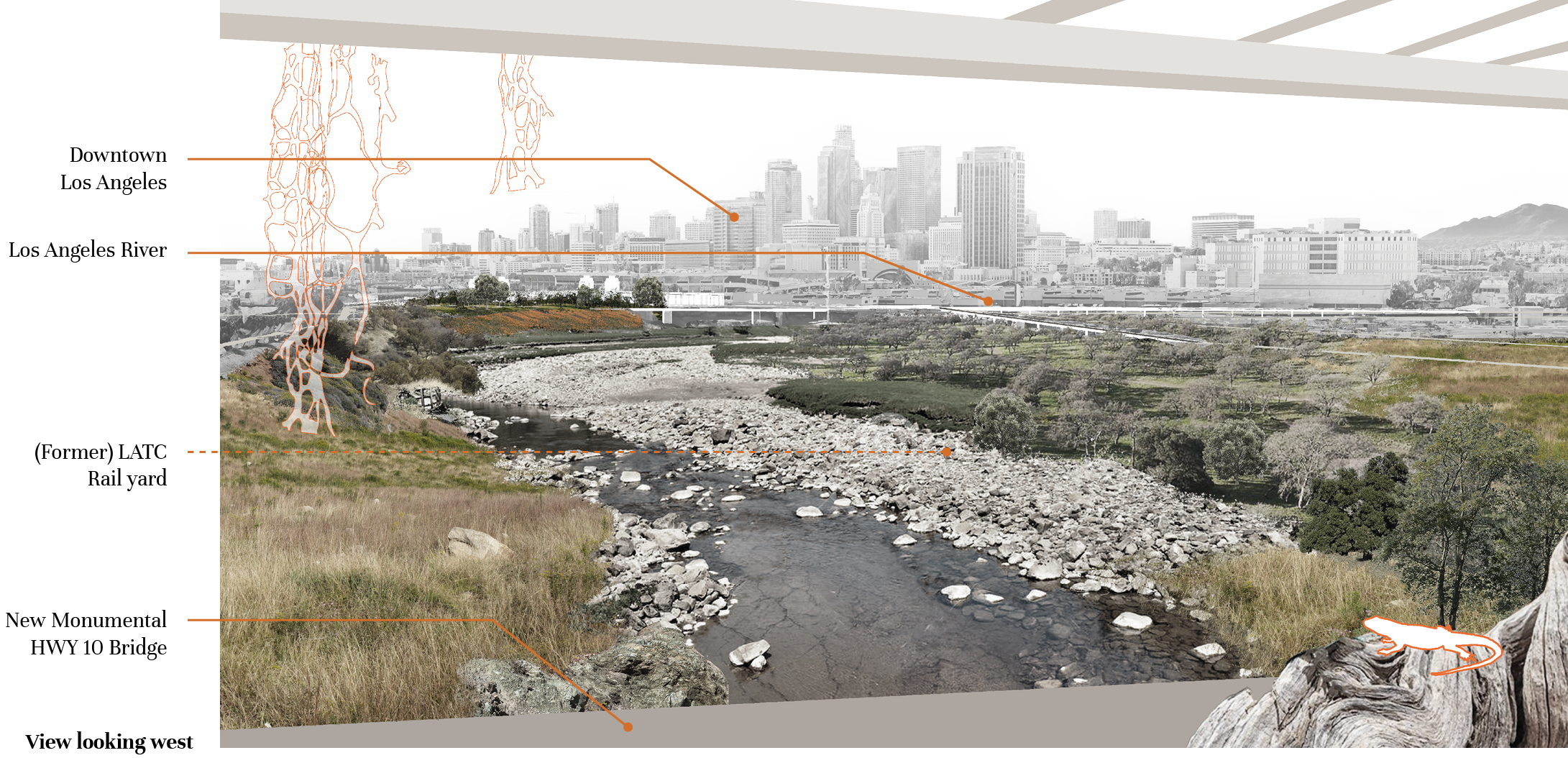
Los Angeles Railyard:
Wild Ways
Harvard GSD Studio, spring 2023
Los Angeles, CA
Team: Jonathan Cook, Katie Wu, & Supriya Ambwani
Instructors: Chris Reed & Nina-Marie Lister
Taking inspiration from the Coast Live Oak as a marker of biodiversity in the Los Angeles region, this project learns from the oak’s ecological succession and corresponding local cultural history to cultivate the land of an existing railyard to be more responsive to both human and non-human needs.
Seeing through the “Species Lens”
Seeing through a Cultural Lens
Preparing for Future Change
Designing with Time
Network Elements
Understanding Access
Outline:
Seeing through the “Species Lens”
Analyzing ecosystems through the perspective of other species reveals hidden truths about the relationship between humans and non-humans. One such relationship exists between the Coast Live Oak and Lace Lichen, exchanging energy across time and generations, blurring boundaries of our traditional definitions of “organism” and, in a way, queering ecology.
Alga cells (phycobionts) launch into the air with fungal cells (mycobionts) attached, providing the basic building blocks for the next lichen. Tree roots move as they detect water, air, and nutrients, thereby moving pavement, rock, or earth. Both represent sessile beings that are not immobile. They move with the wind, stretch towards sunlight, and move boulders, almost imperceptibly to humankind. They adapt their environments as needed but are always in balance with their ecosystems.
The discretization of scientific classification needs to be continually reconsidered as we learn more about the reality of nature. Queering this classification system means moving outside the traditional definitions of relationships, reproduction, and existence.
Conforming to every traditional perception limits understanding.
Pearson Education inc. publishing as Benjamin Cummings. “Lichen Cell Photograph.” Biology 2. Accessed February 2, 2023. https://jb004.k12.sd.us/my%20website%20info/BIOLOGY%201/CHAPTER%2018%20MATERIAL/LICHEN%20OBSERVATION%20LAB/LICHEN%20OBSERVATION%20LAB.htm.
Researched and photographed by Jonathan in the Harvard Farlow Herbarium
Seeing through a Cultural Lens
El Aliso was a giant and ancient sycamore tree located near the original site of El Pueblo de Los Angeles. It was highly significant to the native Kizh (Tongva) people, having located their village of Yaanga nearby. Construction, paving, and structural density of the industrializing area brought about the demise of the tree in 1889, after having lived over 400 years.
Located just across the LA River from our site, this tragic story of economic prosperity at the cost of ancient biodiversity must not be repeated, and instead, demands restitution.
Pierce, Charles C. “Los Angeles Reservoir and Plaza,” 1857. https://tessa2.lapl.org/digital/collection/photos/id/126200/rec/3.
Preparing for Future Change
Just like how El Aliso was a cultural icon for hundreds of years, a new oak forest can become the center for a community that has been continually overlooked.
The LATC Railyard is located east of Downtown LA, just north of Boyle Heights. Its history is diverse, hosting the native Kizh (Tongva) people displaced after Spanish colonization, becoming farmland and vineyards, and witnessing multiple “slum” clearances. It is now a rail transfer center for our globalized economy. Currently surrounded by predominantly Hispanic communities, this land could better serve them with a use other than shipping distribution.
Designed by the team, plan illustrated by Katie Wu
First, locating new green space on an under-utilized triangle allows for its future expansion as adjacent properties change. Following ecological succession patterns, any paved ground surrounding the site is broken up mechanically and organically over time to reestablish systems for nature (oak forest, open waterways, etc.) and systems for humans (plant nursery, food market, plazas, etc.).
Moment 1
Moment 2
Moment 3
Designing with Time
Understanding that landscapes are not static, this design emphasizes the incremental transition. Like a tree growing roots and expanding the cracks in a nearby sidewalk, each moment progresses to de-pave further into the railyard site. Simultaneous neighborhood development enters from the outside as the community grows in population and activity.
Rendering by Jonathan
Network Elements
Details of this design are critical to a successful flexibility of use. A hierarchy of circulation patterns and their corresponding design elements are illustrated below.
Connecting Choice
Numerous mobility choices represent a healthy, just, and equitable environment. Rather than restricting people and non-human movement, new pathways cross physical barriers to connect desire lines. Different quantities of traffic require different design considerations, as illustrated below.
Rehabilitating Space
The resulting infrastructure of inefficient and destructive automobiles is to be reallocated. De-paving here begins to replicate the ecological succession of a recovering ecosystem. A new paradigm demands designers of the physical environment to assume open and connected ground as a primary goal, in a sort of reverse figure-ground.
Prospect Crossing is shown bridging the barrier of the 10 (San Bernardino Fwy), connecting Boyle Heights to East Los Angeles through the former railyard site.
Understanding Access
The practical application of these idealized goals requires a deep understanding of existing access points. However, contrary to traditional practice, access priorities should not be limited to humans. The relationships of other species and their access to each other indicate linkages worth reconnecting, both for humans and non-humans alike.
More information available upon request:













